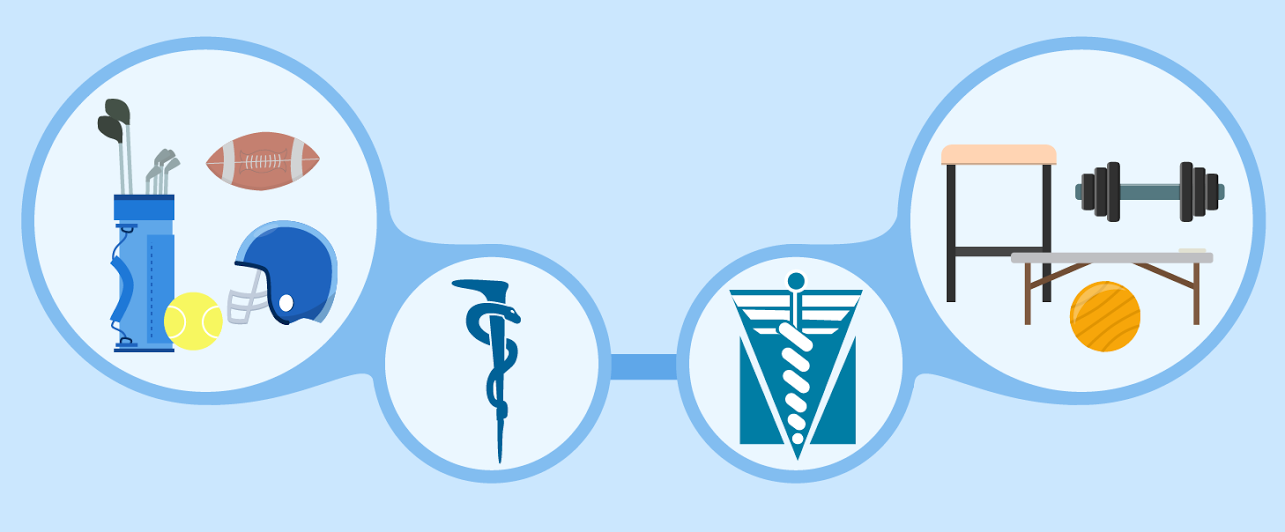How to Maximize the PT-AT Relationship in the High School Setting (Part 1)

This is part one of a two-part series that takes a closer look at the relationship between physical therapists and athletic trainers in the high school sports setting. In this article, Zachary Fox, PT, DPT, ATC takes an athletic trainer’s point of view. Part two will look at the relationship through the eyes of a physical therapist.
You have been there before. I know I have. Your athlete goes down, she heard a pop in her knee, and the assessment reveals a likely torn ACL. Surgery will be required; she will miss the rest of the season. You explain the rehabilitation process to the athlete and her parents. You assure them it will be long and tough, but with hard work and dedication, she will be back for next season faster and stronger than before. Then the parents ask “where should we take her for rehabilitation?” It almost feels like a slap in the face.
Athletic Training in the High School Setting
Certified athletic trainers, by definition, are healthcare professionals who collaborate with physicians to provide preventative services, emergency care, clinical diagnosis, therapeutic intervention, and rehabilitation of injuries and medical conditions.1 Athletic trainers are fully capable of returning nearly any injured athlete back to full participation. Our education prepared us not only to evaluate and assess on and off the field injuries, but to manage, rehabilitate, and return an athlete to their sport as quickly and safely as possible.
While many athletic trainers enjoy the sport coverage and on-site care of athletes, many of us equally enjoy the “behind the scenes” rehabilitation that takes place in the athletic training room (ATR). In a recent study, Pryor et al. revealed that athletic trainers worked more often at games and competition than at practices, placing athletes at a substantial risk of injury during a larger portion of sport participation.2
This begs the question: What should be the primary role of the secondary school athletic trainer? Should we be more focused with the on field management and practice coverage, or the behind the scenes rehabilitation in the ATR? Let’s find out.
What Is the Primary Role of an Athletic Trainer?
Based on the 5 (or 6 depending on the source) domains of Athletic Training, it can be argued that the primary role of the secondary school athletic trainer should be injury prevention, wellness protection, and immediate emergency care.3 Hence, the vast majority of time should be spent on the field or court observing the sport where the risk for injury is highest. Note, this would not be in the ATR performing modality treatments or rehabilitation.
Other members of the sports medicine team, such as the physical therapist (PT), can and should be called upon to assist with rehabilitation. In what Sue Falsone refers to as the athlete-centered model of care, a team of healthcare professionals is responsible for returning an athlete to sport. In this model, a symbiotic relationship coexists with all the members of the sports medicine team where communication is imperative and everyone is working together towards a common goal. Any injury, acute or chronic, that you feel will take more than a couple days to heal offers the prime opportunity to collaborate with a PT.
Using the athlete-centered model effectively not only makes an athlete’s quick and safe return to sport more likely, but also allows the secondary school athletic trainer to remain out of the ATR and on the field or court – limiting exposure to risk and liability.
What Does an Athletic Trainer Gain by Collaborating With a Physical Therapist?
So what do you gain from “outsourcing” your athletes to a PT for rehabilitation a couple times a week?
- More Time on the Field. For starters, you free up your time to be spent at practices, which can enhance relationships with your athletes and coaching staff.
- Free Supplies. You may also find that developing a relationship with a specific PT or clinic can have ‘trickle down’ benefits such as having them donate items like braces, crutches, and taping supplies to help you manage your (already limited) budget.
- Doctor Hours. Once a relationship is established, you may consider developing a weekly “doctor hours” triage clinic where you can have the PT come to the school and re-assess nagging injuries or complaints from your athletes. Taking this initiative will not only earn you respect with the coaching staff and medical community, but it can further help establish your relationships with the parents of your injured athlete.
- Second Opinion. You may also ask the PT if the clinic would be willing to serve as an in-between, sort of a “second opinion”, for parents who think their child may need further diagnosis or imaging. This could save the parents hundreds of dollars, and demonstrate that you really are placing the athlete’s care and needs first and foremost, creating a positive image for yourself and the athletic training profession.
Takeaways
From personal experience, it can be hard to let another healthcare professional do a job that you are more than qualified to perform. If you are willing to share the responsibility in the rehabilitation of the injured athlete, you are creating a safer environment at your school. Taking the lead in this process helps you build stronger relationships with athletes and their parents, the coaching staff at your school, and the medical community as a whole.
- http://www.nata.org/athletic-training
- Pryor RR, Casa DJ, Vandermark LW, et al. Athletic training services in public secondary schools: a benchmark study. J Athl Train 2015;50(2):156
- Valovich McLeod TC, Huxel Bliven KC, Lam KC. et al. The National Sports Safety in Secondary Schools Benchmark (N4SB) Study: Defining Athletic Training Practice Characteristics. J Athl Train. 2013 Jul-Aug; 48(4): 483–492.

